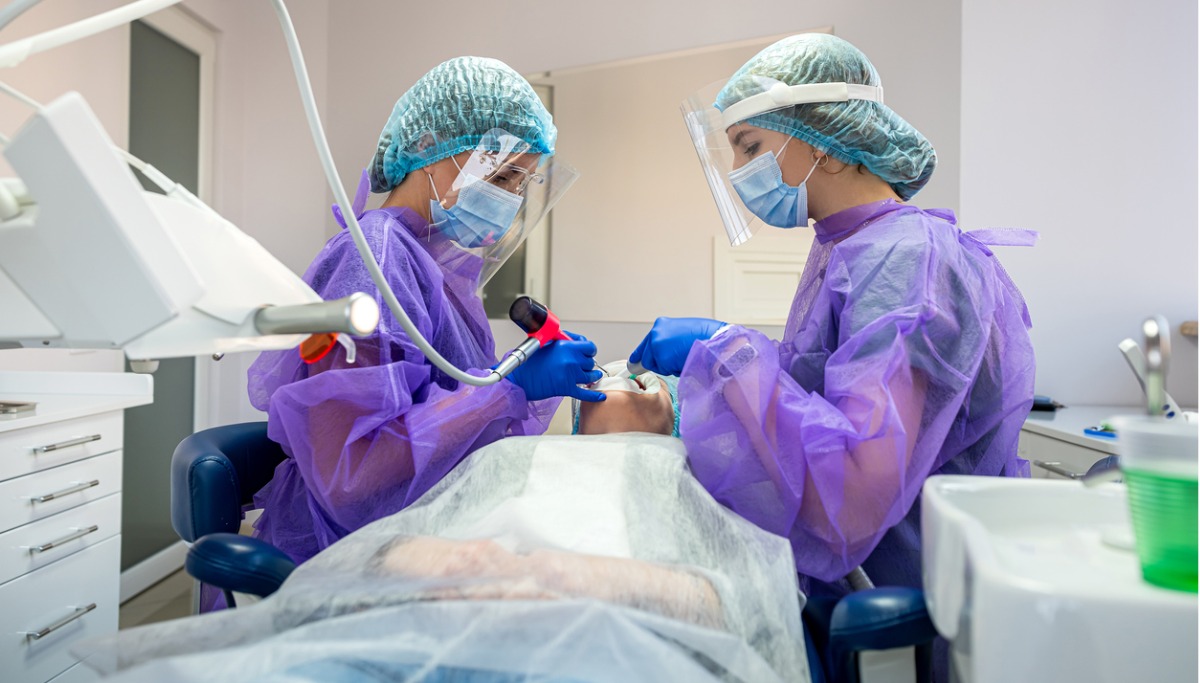What causes a dry socket
What is a dry socket?
Alveolar osteitis, commonly referred to as dry socket, is a painful condition that can occur after the extraction of a permanent adult tooth. It is one of the more common complications following a tooth extraction and happens when a protective blood clot does not form after the extraction, or forms but is totally or partially dislodged from the fresh extraction site. If the clot is lost, then bone and nerves are left exposed, which causes pain and can lead to infection. It is normal to have some soreness and discomfort after an extraction, but if you develop a fever, or the pain suddenly worsens two or three days after the extraction, then call your dentist promptly, as you may have a dry socket.
What causes a dry socket?
While researchers have not found one specific cause, there are several factors they believe contribute to dry sockets. Some potential causes are:
- a pre-existing bacterial infection around the extracted tooth, or
- the result of surgical trauma from a difficult extraction.
Other causes may include problems with the jawbone, such as inadequate blood supply or compromised bone structure, which may further increase the likelihood of developing a dry socket. While dry sockets can develop after the extraction of any tooth, they tend to occur more frequently with wisdom teeth in the lower jaw compared to other teeth. Dry sockets are uncommon in children under age 12.
Dry socket risk factors
There are several factors that can increase your risk of developing a dry socket, including:
- Use of oral contraceptives (birth control pills). High estrogen levels can disrupt the normal healing process.
- Failure to perform proper at-home care. If you do not follow home care guidelines and have poor oral hygiene, then the risk of developing a dry socket can increase.
- Smoking/vaping. Smoking raises your risk of oral infections, including gum diseases. The act of sucking on a cigarette may also physically dislodge the blood clot prematurely.
- Tobacco use. Chemicals in cigarettes, or other forms of tobacco, may prevent or slow healing and contaminate the wound site.
- Tooth or gum infection. Current or previous infections around the extracted tooth increase the risk.
- Previous dry sockets. If you have had a dry socket in the past, then you are more likely to develop it following another extraction.
How to prevent dry sockets
To prevent dry sockets from forming, you should follow the advice of your dentist after your surgery. Common recommendations include:
- Avoid smoking or vaping for 72 hours after surgery, and consider using it as an opportunity to quit.
- Do not touch the wound.
- Eat soft foods and avoid getting food in the extraction area.
- Do not drink through straws for a few days after surgery.
- Refrain from eating hard or small food that could get lodged in the extraction site.
- Rinse gently with warm salt water starting the day after surgery to keep the area clean.
How to prevent dry sockets?
Despite the best efforts of the surgeon and patient, dry sockets can occur. However, there are steps you can take to limit the risk.
To help prevent a dry socket and aid your recovery after a tooth is extracted:
- Carefully follow all pre-surgery and post-surgery instructions from your oral surgeon.
- Don’t drink through a straw for the first 24 to 48 hours as the sucking action could disturb the blood clot in the socket.
- Avoid smoking for several days before and after your extraction.
- Gently brush your other teeth twice a day, pay special attention to the gum line, and floss at least once daily. Try to avoid the area around the tooth socket for the first couple of days.
- If you rinse out your mouth, do so gently. Don’t overdo rinsing, or you may dislodge the blood clot in the socket that helps speed healing.
- Avoid warm and carbonated beverages.
- Avoid crunchy, hard, and chewy foods.
Sources:
1. Dry socket. (2017, January 25) from https://www.mayoclinic.org/diseases-conditions/dry-socket/symptoms-causes/syc-20354376
2. Dry socket. (2021, August) from https://www.healthdirect.gov.au/dry-socket
3. Dry socket. (2022, March 28) from https://my.clevelandclinic.org/health/diseases/17731-dry-socket







